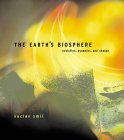Keep Your Eye on the Ball
The Visual Cognition Lab at the University of Illinois has some pretty stunning visual affects available on their web site. One of their movies in particular I’ve shown to a few people and some have refused to believe what they saw.The movie is of two groups of three people; one group wearing white shirts, the other wearing black shirts. Each group controls a basketball. The object is to count how many times the white-shirted team passes the ball to each other; only the passes between the white team members count. All six participants are continuously moving around, so you have to pay attention to the where the ball is. The black team also has a ball, but their passes do not count.
Before you follow the link there are a couple of things to keep in mind:
- You must have QuickTime installed.
- Make sure that the entire movie has downloaded before you begin playing, or it may stop in the middle waiting for the download to complete, which will probably ruin the effect.
- Only play the movie once through, before coming back here and checking your answer.
- Count the white team passes only.
Follow this link to the movie here. Again, please wait for the entire move to download.
Once you have seen the movie and have your count, check it against the answer here.

Maps of the Universe
 Dr. J. Richard Gott and Mario Juric,
a graduate student, both of Princeton University put together spectacular maps of the universe. Using a logarithmic
scale, they used actual data from such sources as the Hipparcos sky survey, and Sloan Digital Sky Survey. Cool stuff.
Dr. J. Richard Gott and Mario Juric,
a graduate student, both of Princeton University put together spectacular maps of the universe. Using a logarithmic
scale, they used actual data from such sources as the Hipparcos sky survey, and Sloan Digital Sky Survey. Cool stuff.

The Nitrogen Cycle
Professor Vaclav Smil, in his July, 1997 Scientific American article “Global Population and the Nitrogen Cycle”, describes the remarkable relationship between the rise in human population over the past century and the availability of synthetic nitrogen fertilizers.These fertilizers where made possible by the Haber-Bosch process developed in 1899.
Naturally-produced fertilizers can provide approximately 200 kg. of nitrogen per hectare annually; this allows for the production of between 200 and 250 kg. of plant proteins. This places a theoretical limit on the number of people that each hectare of land could sustain. Under ideal conditions this would amount to around 15 people per hectare; in practice, the historical limit has been about 5 people per hectare.
The use of synthetic nitrogen fertilizer has allowed these limits to be broken. At current levels, world-wide, these fertilizers account for 40 percent of all nitrogen taken up by cultivated crops. And since these crops contribute 75 percent of all nitrogen in consumed proteins, this means that one third (i.e., 75% of 40%) of humanity’s diet depends on synthetically produced nitrogen.
Smil puts it into these very concrete terms:
“… at least two billion people are alive because the proteins in their bodies are built with nitrogen that came from a factory using [the Haber-Bosch] process.”
He has a new book, The Earth’s Biosphere: Evolution, Dynamics, and Change that I would highly recommend. It’s an interdisciplinary survey of the biosphere and the systems and processes that provide for its self-regulation. It touches on a wide variety of subjects including chemistry, biology, genetics, geology and astronomy; and while it can be a bit jargon-heavy at times, anyone with a reasonable exposure to these areas would not have any trouble following the material. I came away from the book with an even greater appreciation for the workings of our planet than I already had.



